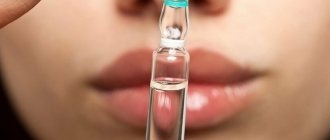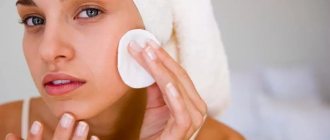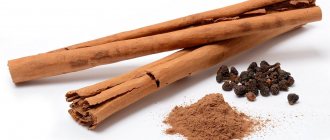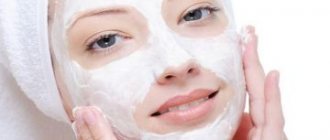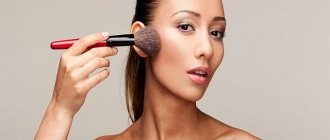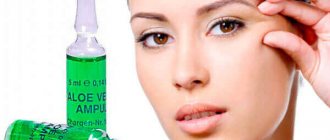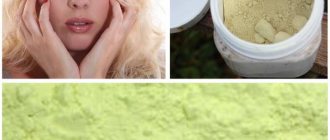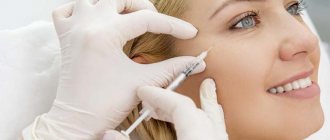The beauty industry has recently been replenished with an effective substance, which is succinic acid for the face. Experts say that it is capable of working real miracles with a person’s appearance and the condition of his internal organs.
Universal acid is taken both internally and externally, produced in tablets and powder form.
The main active ingredients are esters and salts of succinic acid, which are called succinates. They perfectly penetrate the pores and are absorbed in the human gastrointestinal tract.
How succinic acid works (13 functions)
The product, unique in its properties, is available at any pharmacy stall and has minimal health risks. That is, there are almost no contraindications for use and side effects.
Succinic acid received its name back in the 15th century after the German chemist Agricole Georg extracted it from amber.
Experts claim that the acid we are studying has “intelligence,” calling it “smart.” Unlike other types of useful elements, amber can distinguish healthy cells from damaged ones.
Its molecules surround the latter and have a restorative, regenerating effect. And if along the way a completely healthy cell is encountered, then they simply bypass it.
Thanks to this, acid has become so popular in cosmetology. Due to the ability to penetrate deep layers, succinates independently find diseased areas with inflammation or pigmentation, and begin to work effectively.
Succinic acid is a unique element and has a wide range of action:
- Cleanses of toxins, neutralizes harmful agents.
- Affects the body as a general strengthening substance.
- Delivers pure oxygen to cells.
- Relieves severe symptoms of allergic reactions.
- It has antioxidant properties, which inhibits the growth of cancer cells.
- Capable of dissolving scars and recently formed scars.
- It has a rejuvenating effect, especially if combined with mumiyo and hyaluron.
- Relieves rashes, relieves inflammatory and infectious processes, eliminates acne.
- Increases the resistance of the skin and the entire body to external adverse conditions.
- Relieves swelling.
- It is a catalyst that accelerates positive processes in the body.
- Stimulates cellular metabolism.
- Cleanses pores, removes blackheads.
All of the above and other abilities of succinic acid are provided by succinates. And regular use after preliminary consultation with a cosmetologist will not only cleanse the face of acne and inflammation, but also improve the health of the body as a whole.
Precautionary measures
Succinic acid is considered a completely safe drug, and therefore cases of overdose occur quite rarely. However, with prolonged use, the substance can accumulate in tissues, which negatively affects the functioning of various body systems - for example, leads to the formation of stones in the bladder. In any case, before using succinic acid for cosmetic purposes, you need to familiarize yourself with the list of contraindications. Otherwise, there is a risk of unwanted side reactions.
So, the key contraindications include the following:
- gestosis;
- glaucoma;
- hypersensitivity to the drug;
- acute inflammation;
- open injuries on the face, fresh burns, purulent wounds;
- ischemia;
- Urolithiasis
Almost all restrictions and adverse reactions relate to the use of the substance orally. When used externally, the substance causes virtually no side effects. In this case, it is enough to monitor the absence of allergies.
Succinic acid is an effective remedy that significantly improves the condition of the epithelium. With its help you can cope with pimples and acne, smooth out the skin, and improve its tone. In this case, you need to choose the right way to use the product and strictly follow the instructions.
Be beautiful and healthy! Your Super Cosmetologist!
Watch a short presentation of the article
Succinic acid for the face - contraindications
Any substance or plant has its contraindications. And as for amber succinates, although they are extremely rare, they can still cause harm if you do not take into account the specifics of use.
Succinates tend to accumulate in the body, due to which there is a risk of the formation of stones, sand in the kidneys and gall bladder.
Conclusions about this were made by Indian scientists after lengthy research. But their Western and Eastern colleagues questioned such conclusions, since the experiments were carried out on rats.
Doctors say that the human body is structured completely differently and there are no prerequisites for the occurrence of stones. In any case, this issue remains on the agenda.
Otherwise, according to reviews from cosmetologists, there are no particular problems if the rules of use are followed. They also indicate specific contraindications for the use of succinic acid.
CONTRAINDICATIONS
- vision problems, in particular glaucoma;
- gestosis;
- allergic reactions;
- acute inflammatory processes;
- heart diseases – angina pectoris, ischemia;
- ulcerative processes, gastritis in an acute state;
- the presence of open ulcers, wounds, ulcers and burns on the face;
- urolithiasis and hypertension.
Side effects include:
- allergic response of the body;
- stomach ache;
- problems with food processing;
- esophagitis - heartburn;
- increased blood pressure.
It is worth understanding that the listed side effects and a number of contraindications occur only in the case of internal intake of succinic acid.
Contraindications and side effects
Although succinic acid is considered the safest among analogues, in order to avoid problems before the first use, it is recommended to conduct a simple allergy test. Simply crush one tablet and rub the powder into the crook of your elbow. If no red itchy spots appear at the application site within 24 hours, you can experiment with homemade cosmetic recipes.
Like many other natural ingredients, succinic acid can cause some side effects. In most cases, complications are reported if the acid is used in high concentrations or too often. Problems may also arise if the auxiliary products in the mask were not very fresh.
How to use amber acid
Cosmetology, as we have already indicated, quite often creates effective products based on amber succinates.
And what’s noteworthy is that the substance has become popular among brand names: Medical Collagen, Alpika, Amberlin, Repharm and others.
The market satisfies any needs of even the most fastidious people who care about their health and want to look young as long as possible.
They have creams, gels, ointments, creams, tablets, and powder with succinates at their disposal. But if for some reason you can’t use branded products, it doesn’t matter, you can prepare a mask or solution at home.
To do this, it is enough to purchase tablets (powder) in their pure form and take them according to the following scheme:
- The first three days - 500 mg after taking the morning meal.
- Days 4 and 5 – pass;
- Days 6 to 8 – 250 mg per day after morning meals;
- Days 9 and 10 – pass.
If desired, the tablets can be crushed and turned into powder for greater convenience.
Name of drugs containing acid:
- Amber;
- Gelofusin;
- Influnet;
- Hyalual Artro;
- Mexidol Limontar;
- Remaxol;
- Reamberin;
- Cytoflavin;
- Cerebronorm;
- Ethylmethylhydroxypyridine succinate, etc.
Cosmetologists strongly recommend using the listed items externally, including them in unique face masks.
Injecting solutions and taking tablets strictly as prescribed by the doctor and in the absence of contraindications.
For greater safety, if there is a need to use succinates internally, it is better to take dietary supplements containing this substance: Enerlit, Yantar-antitox.
Despite the fact that the listed substances are biological supplements, it makes sense to consult a doctor before taking them.
Beneficial features
The name of the acid speaks for itself; amber or several types of plants are used in its production. The ready-to-use product has the form of bleached water-soluble crystals and is available in tablet form.
The drug increases endurance, lowers blood sugar and strengthens the immune system. The area of use varies from medicine to the agricultural industry, but it has found its main application in cosmetics.
Beneficial features:
- helps reduce and cleanse pores;
- cleanses cells of toxins;
- normalizes water-salt balance, removes swelling;
- binds and neutralizes free radicals;
- restores elasticity, removes small wrinkles;
- nourishes the skin at the cellular level.
Succinic acid is often found in cosmetics in Asian countries. It is used along with hyaluronic acid as a source of nutrients for skin rejuvenation. Reviews from people who have used the acid say that its effect is similar to that of coenzyme Q10, while its cost is tens of times less.
For young skin, acid is an assistant in the fight against pimples, blackheads, blackheads and other imperfections. Acid is a stimulator of cell regeneration, it smoothes scars and small scars.
What foods contain succinic acid?
It is not necessary to seek help for preparations made from the substance we are studying; it is enough to pay attention to a number of affordable and simple products that contain it in considerable quantities.
And if you regularly follow a healthy diet, everything will be fine with your skin and the condition of your body as a whole.
Rich in succinates:
- cherry fruits;
- honey, propolis, honeycomb, beebread, milk;
- alfalfa;
- kefir;
- gooseberries (unripe);
- barley groats;
- apples;
- rye pastries;
- Brewer's yeast.
Of course, it is impossible to get the optimal dose of a unique substance with one apple or a glass of curdled milk.
But succinates tend to accumulate, so you need to consume the listed products daily and within 2-3 weeks very positive processes will begin.
Recipes for use at home
If you follow the advice of experienced cosmetologists in using succinates, the effect will be maximum.
To do this you just need to follow simple rules:
- A crushed tablet or powder can be added to creams, lotions, tonics, and gels. Ratio: 1 tablet – 1 tablespoon of product. It is necessary to achieve complete dissolution of the substance.
- The substance has abrasive properties and can cause microtrauma if used harshly. The peeling property must be used wisely and carefully.
- Before a cosmetic procedure, it is important to thoroughly cleanse your face of makeup and impurities. To do this, just take a steam bath for 5 minutes and remove any remaining moisture with a soft cloth.
Amber peeling
This procedure has a gentler effect than using fruit acids. You can resort to its help at any time of the year - amber alkali is not afraid of exposure to ultraviolet radiation and frost.
Mix a tablespoon (tablespoon) of powder with gel (cream, tonic). Apply the prepared composition to the face with gentle massaging movements and wear for up to 15 minutes, then rinse.
- If you experience a feeling of cold, tingling, or tightness of the skin, do not worry. This is how the actions of succinates are reflected.
- After the procedure, it is not recommended to apply a moisturizer; you need to wait at least half an hour.
- For oily type, apply peeling once every seven days, for dry type - once every 30 days, for normal type - 2 times every 7 days.
Tonic
For the recipe, you need to crush two tablets of succinic acid (or a preparation containing it), pour into half a glass of water (up to 40 degrees). Apply twice a day and leave for about 10 minutes for oily skin.
There is also another recipe. You need to turn two tablets into powder, mix with 5 drops of rosemary oil and ylang-ylang substance.
This tonic can be stored for up to 7 days in a cool, dark place.
If you add a little alcohol (10 ml), it will last twice as long. Apply the product to normal and dry skin types (categorically not suitable for dry and sensitive skin types).
Scrub
Due to the inclusion of different components in the scrub, this procedure has a much gentler effect on the skin.
It is necessary to dilute the powder or crushed tablets in cream, cream or gel for washing. Apply to face and make light massaging movements, and rinse (or remove with a napkin).
Application results
Judging by comments on forums and reports from cosmetologists, periodic use of masks containing succinic acid makes the skin less oily. Existing breakouts dry out and fewer new acne appear in the long term.
Although succinic acid is widely advertised as a means to combat acne, the component has many more positive effects. Oral intake of tablets leads to a comprehensive improvement of the body, and external use gives the following positive results.
- Prevention of fungal diseases. Succinic acid inhibits the growth of not only bacteria, but also fungi. This means that masks and peelings will help you get rid of dermatomycosis.
- Disappearance of deep cystic acne.
- Relieving negative symptoms of inflammatory processes, including eczema and psoriasis.
- Accelerated healing of dry wounds.
- Skin hydration. Succinic acid is structurally similar to the skin's natural lipids and helps control and balance excess sebum production. The powder can be added to store-bought creams containing hyaluronic acid. The two elements will enhance each other's effects.
- Antioxidant protection. Amber extract is also valued for its antioxidant properties. The product can prevent tissue damage caused by free radicals. That is why succinic acid can be found in cosmetic products aimed at combating aging.
- Accelerated renewal of the epidermis. The product accelerates metabolic processes that promote skin rejuvenation and can ultimately help improve skin firmness and elasticity.
Succinic acid is not enough to completely eliminate acne or wrinkles. But of course, this ingredient can be safely added to periodic care.
The material was prepared by the editors of the online store of Korean cosmetics Ayumishop.
Masks with succinic acid (4 options)
There is more than one recipe for homemade masks based on succinic acid. Below are the most effective options.
Acne mask
The recipe is very simple, but very effective. It is worth dissolving amber powder in micellar water, soaking a cotton pad in it and applying generously to the face.
You need to wear it until it dries, and if you feel tightness, you don’t need to do anything - the succinates continue their work.
Experienced dermatologists and cosmetologists recommend using this recipe for young girls aged 20-23 years to get rid of acne and pimples.
Skin nourishing product
The powder (2 tablets) should be mixed with 50 grams of olive oil (cold pressed) and applied to the skin of the face for 30 minutes. Then, without rinsing, pat dry with a soft cloth and towel.
This mask has an immediate effect: the skin becomes soft, moisturized, and as pleasant as a baby’s bottom.
Rejuvenation mask
According to cosmetologists, a mixture of mumiyo and succinic acid has an excellent effect on the skin.
Both substances include a lot of unique elements and can significantly rejuvenate the face.
To do this, two tablets of each type are crushed in equal parts. You need to mix, add ylang-ylang and wear for 30 minutes.
The mask should be done twice a week for a month. The result will be pleasantly surprising, in addition to the fact that wrinkles are smoothed out, fresh scars and scars are resolved.
Whitening agent
To get rid of age spots and too bright freckles, you need to mix the powder from two tablets with kaolin (one tablespoon).
It is worth adding a little milk (fat), bringing it to the structure of a thick slurry. After this, apply to the skin of the face for 20 minutes, rinse with warm water.
Repeat twice a day for a month, after which the spots will go away, the color will even out, swelling will disappear, the air will become fresh and youthful. And do not apply too concentrated composition to your eyelids.
General rules and tips for use
The pharmaceutical product is recommended for use by people with very sensitive skin. There is virtually no risk of irritation. But if the skin is thick and reacts well even to aggressive cosmetics, then to achieve optimal results it is still better to use willow bark extract (“salicylic acid”).
To avoid thinning of the dermis, masks according to the above recipes are allowed to be used no more than three times a week. In summer, it is recommended to supplement your daily care with SPF cream, as photosensitivity may slightly increase. Also, do not apply the product in a thick layer (unless otherwise indicated in the recipe).
Expert opinion
- Cosmetologist
- Surgeon
Michelle Ellern
practicing cosmetologist-dermatologist
Before you start using it, it makes sense to take a test for individual intolerance. Apply a little product to the back of your elbow and wait half an hour. If there is no rash, redness, swelling, itching or other unpleasant sensations, everything is fine, you can use it.
Theda Contis
plastic surgeon
Succinic acid, when used, allowed the cosmetology industry to make a big breakthrough. Previously used fruit acids simply fade into a secondary role, although they are considered one of the best ways to rejuvenate the skin and restore the body's strength.
How to cook properly
To prepare masks intended for home procedures, you must use succinic acid in tablets. It is usually sold in pharmacies. Simply crush the tablets to a powder using a large pestle or metal mortar. But liquid succinic acid, which is usually sold in gardening stores, is strictly prohibited for use in cosmetology! Even if the bottle says “100% purified,” this product cannot be applied to the skin. Even if the recipe for a succinic acid face mask does not indicate which form to use, it means the tablet form.
